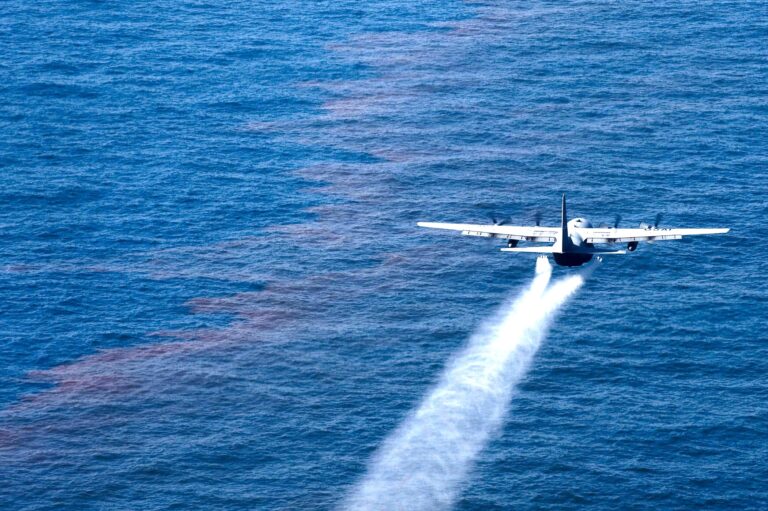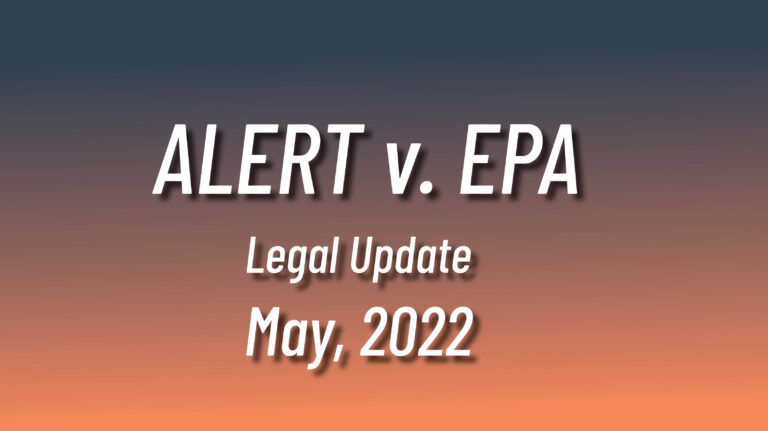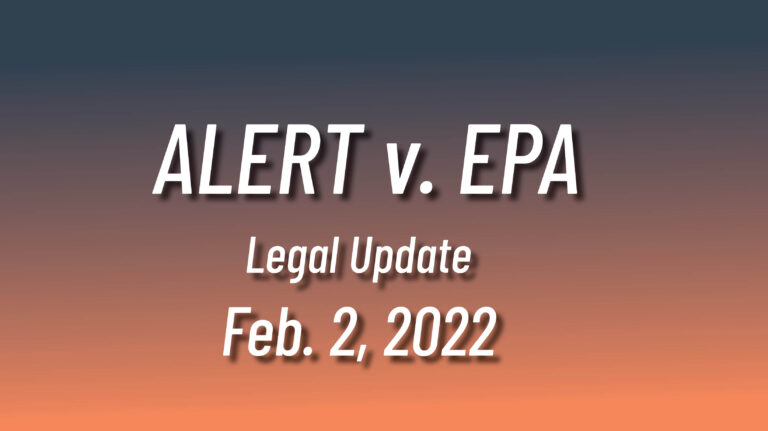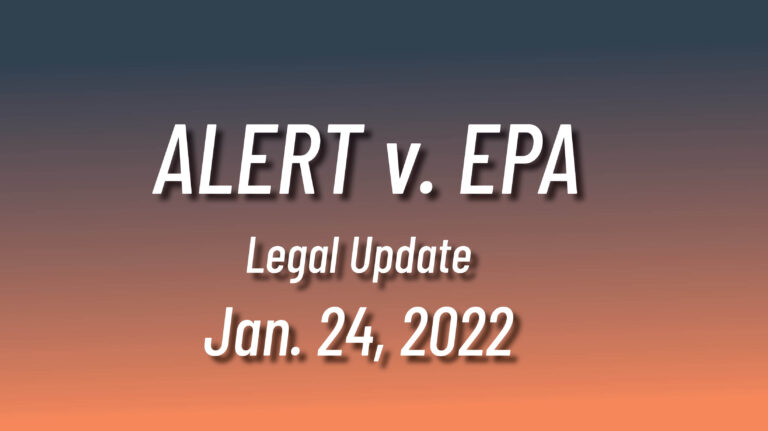Press Release
PRESS RELEASE: ALERT and Friends of San Juans to Co-Host Oil Spill Response Public Engagement Event
On Saturday, October 26, 4:00 PM at Brickworks, oil spill veteran and activist Dr. Riki Ottwill present, “Oil Spill Response: An Opportunity for Change.” The in-person event will hopefully be livestreamed.
Read MorePRESS RELEASE: Groups Petition EPA to Ban Use of Oil Dispersants Discontinued by the Manufacturer —And Ask United Nation Bodies to Do the Same
A petition filed by Earth Island Institute’s ALERT Project and the Government Accountability Project asks the U.S. Environmental Protection Agency (EPA) to remove the two chemical dispersants, Corexit 9527A and 9500A that were used after the 2010 BP Deepwater Horizon oil disaster, from the list of products authorized under the National Contingency Plan (NCP) for…
Read MorePRESS RELEASE: Lawsuit Filed to Halt Mid-Barataria Sediment Diversion Project
FOR IMMEDIATE RELEASE – [download PDF here]. Lawsuit Filed to Halt Mid-Barataria Sediment Diversion Project Army Corps Project Would Divert Mississippi Fresh Water, Mud and Toxins into the Barataria Wetland Basin with Devastating Impacts New Orleans, Louisiana –– Local commercial fishing organizations, health advocates, and conservationists filed a lawsuit today to halt the massive…
Read MoreEPA Issues Final Rule Governing Use of Chemical Dispersants on Oil Spills (Alert v. EPA)
For Immediate Release – [Download PDF] Berkeley, CA (June 13, 2023) — The U.S. Environmental Protection Agency (EPA) has issued a long-awaited final rule governing oil spill response that may better safeguard the health of millions of people living on United States coastlines, rivers, and even highways where oil spills occur. Prompted by a lawsuit…
Read MorePetition to OSHA calls for the critical protection of oil spill workers
For Immediate Release Contact: Riki Ott, ALERT Project, 206-853-2855, [email protected] Labor and Health Advocates and Tribal Emergency Management Councils Call for OSHA to Protect Oil Spill Workers OSHA’s reporting standards keep symptoms of toxic exposure from being recorded BERKELEY, CA (February 13, 2023) — Today, in an act of solidarity, labor, commercial…
Read MoreCourt case piques Congressional interest and oversight / EPA’s second status report reveals intent to finalize rule without current science
July 28, 2022. U.S. Senator Markey and U.S. Representatives Barragán and Khanna sent an oversight letter to EPA, urging it to update and strengthen its proposed rule on dispersant use before finalizing it based on current science. The letter states, “New scientific research has demonstrated an urgent need for stronger regulations that better reflect the…
Read MoreALERT petitions EPA to supplement its 2015 proposed rule with current science
June 23, 2020. An ALERT coalition of individuals, environmental justice, and climate justice groups took action to step up pressure on EPA to ensure that the regulatory process considers the new data and information. The coalition petitioned EPA to supplement its 2015 proposed rule with current science before finalizing the rule in May 2023.…
Read MoreEPA reply to September 2021 letter inspires no confidence
May 16, 2022. Nearly six months after receiving a coalition letter from ALERT, EPA replied, stating that the agency and Dept. of Justice decided not to appeal the federal district court decision and that it “is working through its action development process to ensure a final rule” by the court-ordered deadline of View EPA’s…
Read MoreEPA’s first status report fails to report on key issue
February 2, 2022. EPA’s first status report fails to provide an update on one of the key arguments it used in court to delay the final rule until 2023. Over a year ago on May 20, 2021, EPA told the court that the oil industry had blocked access to the reference oils that EPA needed…
Read MoreAtypical dispersant use monitoring rules go into effect
January 24, 2022. Despite last-minute efforts by ALERT, neither the executive nor the legislative branch could stop the rollout of EPA’s final rule on environmental monitoring of “atypical dispersant use situations.” This was defined as “[a]ny subsurface use of dispersant in response to an oil discharge, surface use of dispersant in response to oil…
Read More






